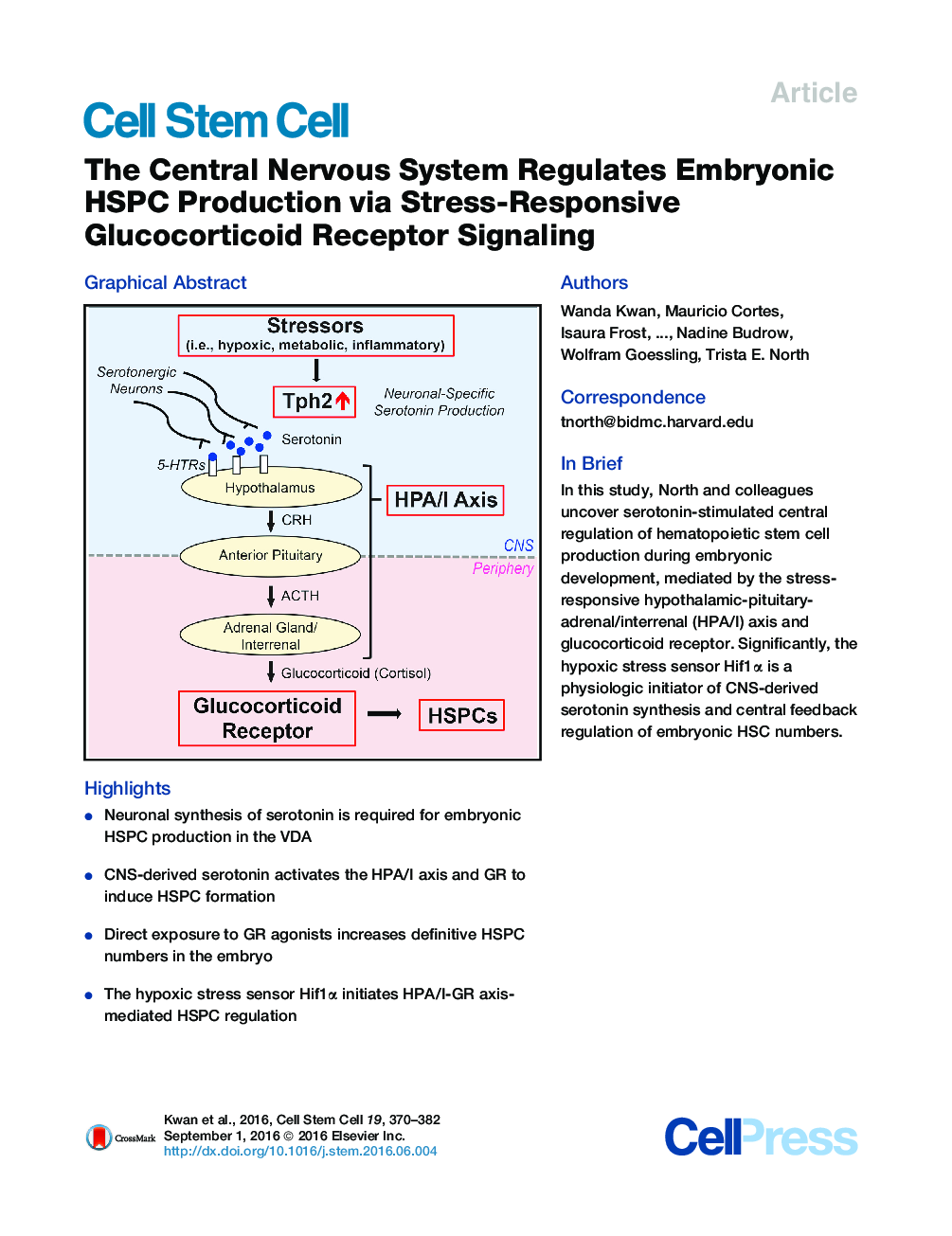| Article ID | Journal | Published Year | Pages | File Type |
|---|---|---|---|---|
| 2078434 | Cell Stem Cell | 2016 | 13 Pages |
•Neuronal synthesis of serotonin is required for embryonic HSPC production in the VDA•CNS-derived serotonin activates the HPA/I axis and GR to induce HSPC formation•Direct exposure to GR agonists increases definitive HSPC numbers in the embryo•The hypoxic stress sensor Hif1α initiates HPA/I-GR axis-mediated HSPC regulation
SummaryHematopoietic stem and progenitor cell (HSPC) specification is regulated by numerous defined factors acting locally within the hemogenic niche; however, it is unclear whether production can adapt to fluctuating systemic needs. Here we show that the CNS controls embryonic HSPC numbers via the hypothalamic-pituitary-adrenal/interrenal (HPA/I) stress response axis. Exposure to serotonin or the reuptake inhibitor fluoxetine increased runx1 expression and Flk1+/cMyb+ HSPCs independent of peripheral innervation. Inhibition of neuronal, but not peripheral, tryptophan hydroxlyase (Tph) persistently reduced HSPC number. Consistent with central HPA/I axis induction and glucocorticoid receptor (GR) activation, GR agonists enhanced, whereas GR loss diminished, HSPC formation. Significantly, developmental hypoxia, as indicated by Hif1α function, induced the HPA/I axis and cortisol production. Furthermore, Hif1α-stimulated HSPC enhancement was attenuated by neuronal tph or GR loss. Our data establish that embryonic HSC production responds to physiologic stress via CNS-derived serotonin synthesis and central feedback regulation to control HSC numbers.
Graphical AbstractFigure optionsDownload full-size imageDownload high-quality image (208 K)Download as PowerPoint slide
